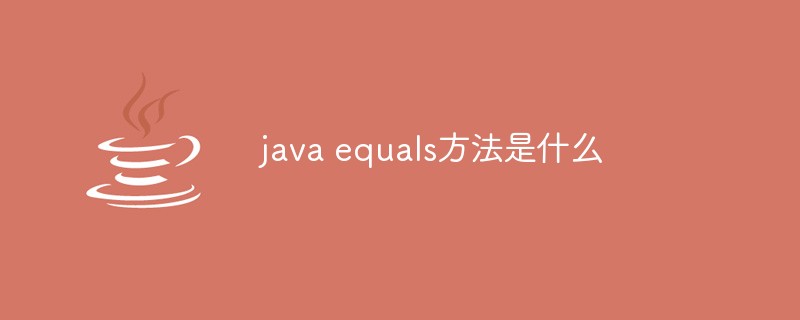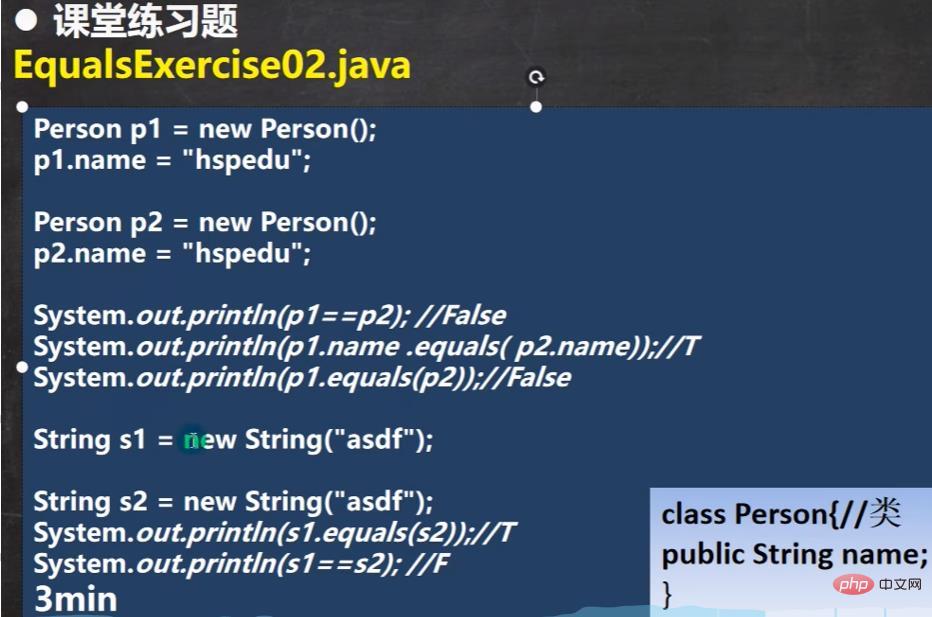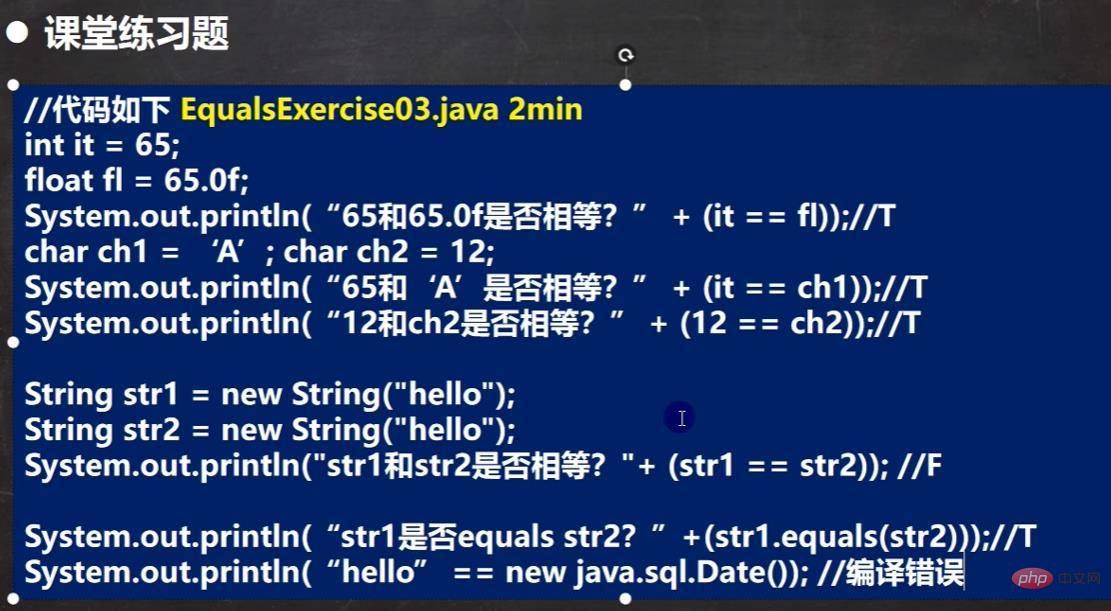
java equals method is a method in the object class and can only be used to determine the reference type; the equals method by default determines whether the addresses are equal. This method is often overridden in subclasses to determine whether the contents are equal. Its usage syntax is such as "public boolean equals(Object obj) {return (this == obj);}".

#The operating environment of this tutorial: Windows 10 system, java8, Dell G3 computer.
equals method in Java
"==" is a comparison operator.
The source code of the equals method in the Object class:
The equals method in the Object class defaults to comparing whether the object addresses are the same.
public boolean equals(Object obj) {
return (this == obj);
}"hello".equals("abc");Explanation: this refers to the current object, this refers to who called the equals method, and the above hello calls equals, so this refers to the string hello, and the obj object on the right of ==, is the incoming abc.
Exercise 1:
package object;
/*
判断两个person对象的内容是否相等
如果两个person对象的各个属性值都一样,则返回true,反之返回false
*/
public class EqualsExercise {
public static void main(String[] args) {
Person person1 = new Person("jack", 10, '男');
Person person2 = new Person("jack", 10, '男');
System.out.println(person1.equals(person2)); //输出结果是true
}
}
class Person {
private String name;
private int age;
private char gender;
//重写Object的equals方法
public boolean equals(Object obj) {
//如果比较的两个对象是同一个对象,则直接返回true
if (this == obj){ //this就代表调用equals方法的那个对象,obj就是方法里面的实参
return true;
}
//类型判断
if (obj instanceof Person){ //obj是Person,我们才比较
//进行 向下转型(即obj转成Person); 因为我需要得到obj的各个属性,如果不转型,拿不到
Person p = (Person) obj;
return this.name.equals(p.name) && this.age == p.age && this.gender == p.gender;
}
//如果不是person,则直接返回false;总不能拿一个人跟一个狗比
return false;
}
public Person(String name, int age, char gender) {
this.name = name;
this.age = age;
this.gender = gender;
}
public String getName() {
return name;
}
public void setName(String name) {
this.name = name;
}
public int getAge() {
return age;
}
public void setAge(int age) {
this.age = age;
}
public char getGender() {
return gender;
}
public void setGender(char gender) {
this.gender = gender;
}
}Tips:
Instanceof Usage: result = object instanceof class
Instanceof has an object on the left and a class on the right; when the object is an object created by the class or subclass on the right, true is returned; otherwise, Return false.
Exercise 2:

Explanation:
- sout1: p1 and p2 are both objects, so == determines whether the addresses are the same, false
- sout2: p1.name and p2.name are both strings, so the equals here calls the equals in the String class Method, what is judged is whether the contents are the same, true
- sout3: p1 and p2 are both objects, so the equals here is the equals method in the Object class, what is judged is whether the addresses are the same, false
- sout4: s1 and s2 are both objects of the String class, so the equals here calls the equals method in the String class to determine whether the contents are the same, true
- sout5: s1 and s2 are both objects , so == determines whether the addresses are the same, false
Exercise 3:

Explanation:
- sout1: 65 and 65.0 are equal, true
- sout2: The essence of characters is still numbers, check the AscII table, A is 12, true
- sout3: Nothing to say
- sout4: Nothing to say
- sout5: Nothing to say
- sout6: Not the same type, == direct compilation error
Related recommendations: "Java Video Tutorial"
The above is the detailed content of What is the java equals method?. For more information, please follow other related articles on the PHP Chinese website!
 What is the difference between a router and a cat?
What is the difference between a router and a cat?
 Lenovo keyboard driver
Lenovo keyboard driver
 What is the console interface for?
What is the console interface for?
 What to do if the specified module cannot be found
What to do if the specified module cannot be found
 How to connect html files and css files
How to connect html files and css files
 How to execute a shell script
How to execute a shell script
 How to open state file
How to open state file
 What are the advantages of SpringBoot framework?
What are the advantages of SpringBoot framework?